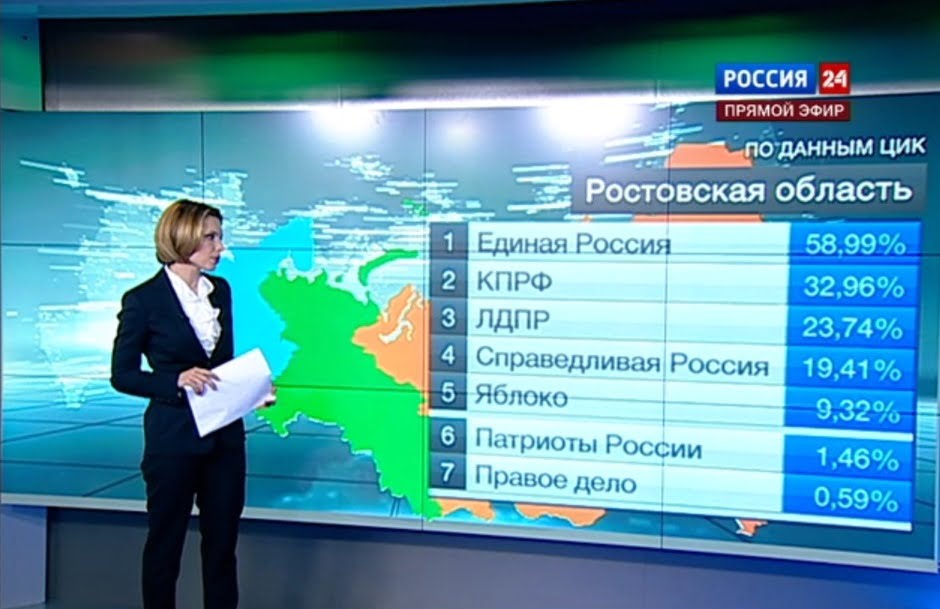In December 2011, elections to the State Duma were held in Russia. After this, discussions about falsification of voting results are not complete without mentioning the number 146. We checked whether the total result of the parties, according to the Central Election Commission, is really exceeded in several regions 100%.
For almost ten years now, the number 146 in Russian culture has been called nothing more than Churov’s number. In 2007, State Duma deputy from the LDPR Vladimir Churov became chairman of the Central Election Commission (CEC) and for two terms in this post noted a number of very dubious statements, as well as "Churov's saw". But still, in a special place in his track record are the parliamentary elections of 2011, the results of which became the reason for mass protests and rallies of many thousands, which led to the “Bolotnaya Affair”. The most vivid imprint in people's memory was left by the story that in the Sverdlovsk region the parties participating in the elections scored in total 115%, in Voronezh - 129%, and in Rostov - 146%. Over time in people's minds regions could change, and all the voices recorded to “United Russia”, but phrases like “I am 146% sure” are firmly entrenched in the Russian language.
On the night of December 4–5, 2011, the Rossiya 24 TV channel broadcast a news program dedicated to the preliminary election results. On the screen installed in the studio, tables with the distribution of votes by party replaced each other, which were read out by presenters Ivan Kudryavtsev and Anna Schneider. Although the table did not include the amount of percentages, somewhere in the middle of each list the presenters became noticeably embarrassed:
The problem with the calculation was noticed quite quickly social network users And journalists. A few days later, the head of the Rostov election commission, Sergei Yusov stated, that the table shown on air has nothing to do with the actual voting results: “Firstly, at the Central Election Commission the boards on which the numbers were displayed were built completely differently, and secondly, all political parties were located strictly in the order in which they were located on the ballot.” The official also referred to the fact that the State Automated System “Elections” is a closed system and data from it cannot be made publicly available without the knowledge of the Central Election Commission.
Although Yusov’s last argument seems overly simplified, experts also agree with him. For example, professor of the St. Petersburg Polytechnic University Yuri Karpov explains incredible percentages feature of the software. The State Automated System “Elections” uses a parallel counting program, which can immediately produce incorrect results, and only very thorough and professional preliminary testing can reduce the probability of error to zero. According to Karpov, if at some point the sum of the percentages in voting in the Rostov region exceeded 100%, then the unskilled actions of the programmers working in the Central Election Commission are to blame.
Vladimir Churov also recognized the possibility of imperfection of the automatic system. After his resignation from the post of head of the Central Election Commission, he answered to the question of journalist Andrei Kolesnikov about 146%: “You understand perfectly well that this is not our story, it has nothing to do with the electoral system at all... There were no such figures in the electoral system. There were different figures: in St. Petersburg, in the local government elections, many candidates received more than 100%. There was a systemic failure when counting votes in multi-member constituencies, and we had to take quite tough measures; several chairmen of territorial election commissions were forced to change jobs. <…> We had to introduce a special filter for the State Automated System “Elections”, now the machine itself will cut off such fantastic results.” Two years earlier, Churov named the incident was a provocation and blamed it on one of the VGTRK employees, “who then got a very good position overseas.” Also official promised to sue at those who, three years after the elections, continued to “jokes about 146%.”

We were unable to find comments from TV presenter Anna Schneider, who announced the preliminary results of voting in the Rostov region, in open sources. Her husband, journalist Alexey Pivovarov, recently told, that the curiosity was associated with the editor’s mistake: “It was not a picture from the Central Election Commission, it was graphics that they put in by hand.” Operator Leonid Krivenkov who worked on that broadcast described the situation in more detail: “Of course, there was no employee who received for this, in the words of the Chairman of the Central Election Commission Churov, “a warm place overseas.” Everything was much simpler: orders came from the Kremlin to “Russia-24” - what percentages for “United Russia” should be shown in the news. The editor-in-chief asked: “What about other parties?”, to which she received the answer: “And show the other parties the percentage they actually scored.” The editor-in-chief did not argue, because the Kremlin knows better, and did everything as she was ordered. That’s how it turned out to be 146%.” If everything was so, then the “real” result of United Russia in the Rostov region was 12.5%. It’s hard to believe - the party had the worst result in that campaign showed in the Yaroslavl region, gaining 29% of the vote.
IN final protocol The figures agreed with the election results in the Rostov region, and all parties received a total of 100%. Apparently, the figures shown on air had no relation to reality and were either the result of a temporary technical error in the State Automated System “Elections”, or a deliberate or accidental mistake by the television editor. In any case, it is hardly worth using this case seriously in discussions about the problems of the electoral system (unlike, for example, works expert on electoral statistics Sergei Shpilkin and his colleagues).
Mostly true
Read on topic:
If you find a spelling or grammatical error, please let us know by highlighting the error text and clicking Ctrl+Enter.







